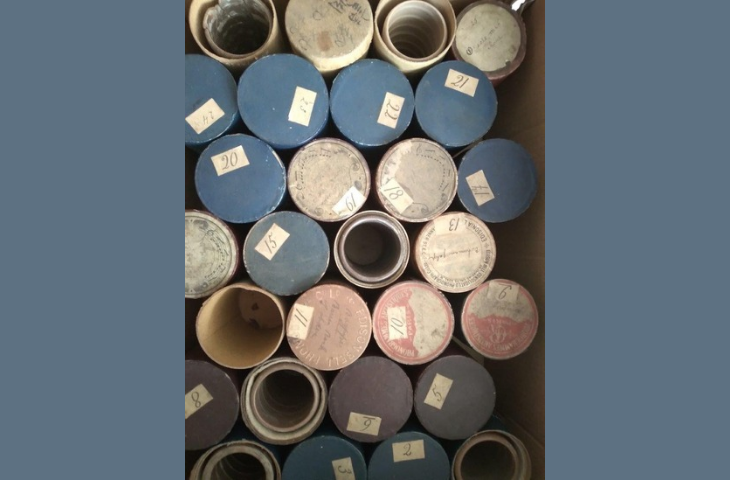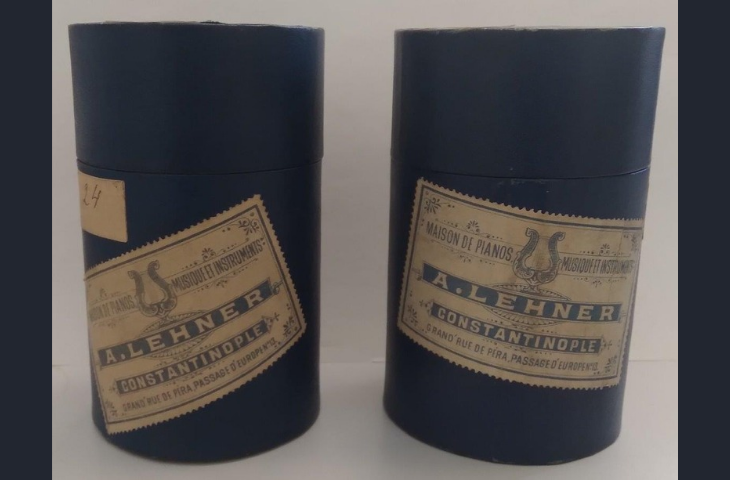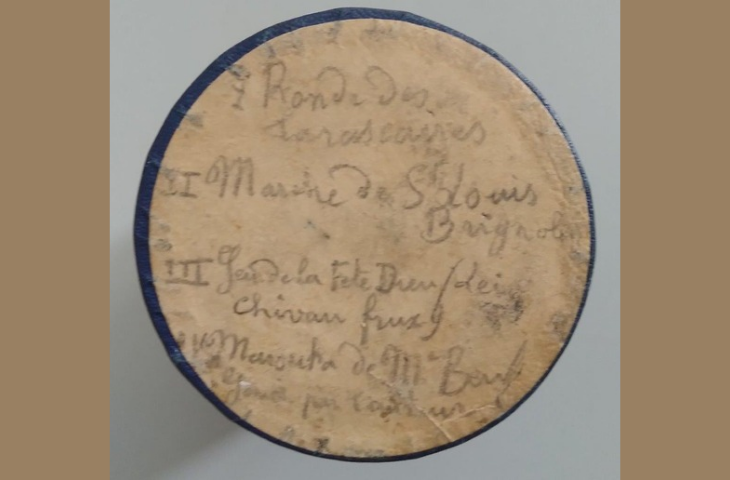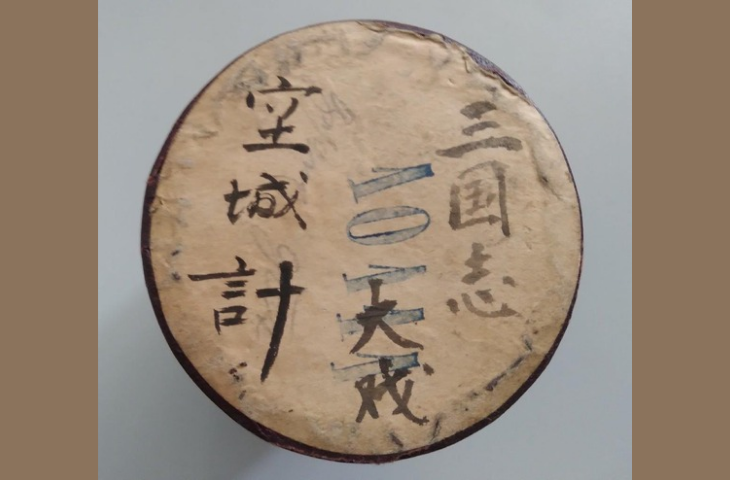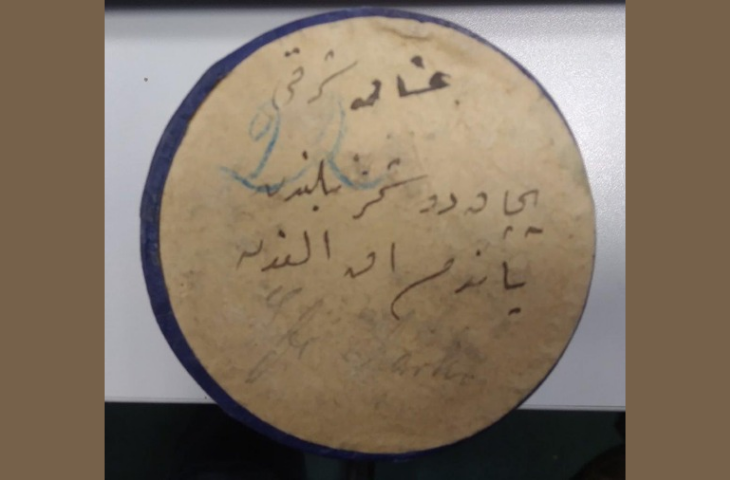The phonographic archives of the Brussels Instrumental Museum
At the turn of the nineteenth and twentieth centuries, probably towards the very end of 1899, Victor-Charles Mahillon, curator of the Instrumental Museum of the Royal Conservatoire in Brussels, conceived the project of building up a ‘collection of graphophone cylinders reproducing popular music from different countries’ (Archives MIM, Correspondance Mahillon). From January 1900 onwards, he travelled all over the world in search of phonograph recordings: in Brittany (Quimper and then Vannes), London, Istanbul, Madrid, Dublin, Java, Tokyo, Peking, Calcutta, and so on.
The creation of a collection of sound recordings dedicated to the world's popular musical traditions is striking in its precociousness. It is exactly at the same time as the Phonogrammarchiv project initiated by the Academy of Sciences in Vienna and the Musée Phonographique designed by Léon Azoulay for the Société Anthropologique de Paris. However, while the latter two projects integrated instrumental music into a vast programme with mainly ethnographic and linguistic aims, Mahillon's project gave it a central role, with the declared aim of using the phonograph as a tool for musicological and organological documentation. In this respect, it predates by several years the famous Phonogramm-Archiv created at the Berlin Institute of Psychology by Carl Stumpf and Erich Moritz von Hornbostel.
A project between notation and documentation
In a culture where notation was seen as the main means of conveying music, the phonograph patented by Edison in 1877 took several years to establish itself as a truly musical medium. For a long time, therefore, the documentation of oral musical practices was dependent on transcription, often arranged for the piano. Until well into the last decade of the nineteenth century, Victor-Charles Mahillon himself did not seem to envisage documenting the musical traditions associated with his collection of instruments other than by means of the scores he accumulated en masse in the Special Library of the Instrumental Museum. The only alternative to this medium was the music box (inv. 1946) donated by the Bengali rajah Sourindro Mohun Tagore in 1881, which the Brussels curator claimed made it possible ‘to get an absolutely exact idea of the true character of the Hindu melody and to substitute for the cold interpretation of the notation the feeling of the author himself’ (Écho musical, 12 January 1882).
The creation of a collection of sound recordings, and of instrumental music in particular, therefore represented a major break in Victor-Charles Mahillon's way of thinking. In this respect, it is not insignificant to note that he did not include the Indian music box in his inventory until the very last years of the nineteenth century, almost two decades after its acquisition (Catalogue, vol. 3, 1900). In other words, this music box, initially perceived as a device on which Indian music was recorded, became a musical instrument at the same time as the phonograph took on the role of music reproducer. However, the phonograph did not entirely supplant the piano score as a musical medium, as shown by certain requests for ‘cylinders reproducing popular music [...] either vocal, or mainly instrumental, or instrumental and vocal together’, in which Mahillon specified that in the last two cases, the music ‘should be played on the original instruments and not reproduced on the piano, which would diminish its value’. In other words, he linked singing to an abstract melodic dimension - notation - which obscures the question of intonation, while seeking to document the timbre of the instruments, which remains irreducible to any form of transcription.
The assembly of the phonographic collection
It is not easy to pinpoint the conditions that enabled Mahillon to effect such a paradigm shift. Although he does not seem to have had any direct contact with the initiators of the phonographic archives in Vienna, Paris and Berlin, it is nevertheless possible to guess at certain triggering factors. Firstly, the acquisition at the end of 1899 of a graphophone accompanied by various cylinders (as yet unidentified) through the intermediary of the patron Louis Cavens must have been decisive (Archives MIM, Correspondance Mahillon). Secondly, the receipt at the same time of several cylinders sent from Calcutta by the Tagore rajah, Tianjin by Edouard Closson and Peking by Jules Van Aalst must have raised awareness (Annuaire, 1900). Finally, it is particularly suggestive to note that this last shipment coincided exactly with the Chinese recordings of Paul Georg von Möllendorff offered by Robert Hart to Léon Azoulay (Bulletin de la Société d'Anthropologie, 1900/1, 1902/3). As Hart, Möllendorff and Van Aalst were all colleagues in the Chinese customs administration, it is very possible that Mahillon learned of this project to collect data in China through his friend Van Aalst.
To assemble his phonographic collection, the curator adopted the same strategies as for acquiring musical instruments, simultaneously mobilising his personal relations, Belgian diplomatic networks and commercial distribution. His first idea seems to have been to organise recordings remotely by facilitating the purchase of equipment for his correspondents in Calcutta, Java, Tokyo and Peking. However, he subsequently diversified the intermediaries, alternately contacting production companies such as the Columbia Company, merchants who distributed cylinders, and private individuals who were likely to be able to record music themselves. It should be noted that he was nevertheless led to refuse certain offers that were too expensive, such as the interesting collection of cylinders of rural ‘oriental music’, probably recorded in the field, offered by Checri-Saouda in May 1900 and previously presented in Paris to the composers Vincent d'Indy and Louis-Albert Bourgault-Ducoudray (who was also a great collector of Breton music). The result of this acquisition strategy was a heterogeneous collection of commercial and domestic recordings, as well as field recordings.
A forgotten collection
Unlike the renowned phonographic archives in Vienna, Paris and Berlin, the Brussels archives remained unknown until recently, probably because, as part of a museum of musical instruments, they were never identified as such and therefore never systematically inventoried. The exact extent and composition of the collection is therefore unknown, but the inclusion in the 1942 inventory of ‘forty-eight graphophone cylinders recording exotic music’ (inv. 3590) in a review of unexhibited items suggests that it never developed to the same extent as the other collections. This lack of identification is probably the reason for the partial dispersal of the collection, with various loans documented during the first half of the 20th century, such as the Indian recordings used in the preparation of a play as early as May 1900 (Gerothwohl), or the ‘five rolls of recordings of exotic music’ loaned in December 1943 and not returned the following year (De Bock).
Despite these gaps, the rediscovery in the MIM reserves of forty-three wax phonograph cylinders, mostly preserved in their original boxes, has made it possible to reconstitute part of this forgotten collection. Alongside a continuous numbering system (1 to 43), which may be the result of the 1942 inspection, there are a number of inscriptions which, in the case of the numbers, testify to the existence of several older sub-collections that are now incomplete and, in the case of the texts, attest to a wide variety of origins: Provence, Egypt, China, India, the Ottoman Empire, England, North America, etc. Although the use of simplified Chinese characters is curiously reminiscent of a period when the wax cylinder was already obsolete, a number of matches between these sources and Mahillon's correspondence show that this small collection is at least partly the result of the sound archives project initiated at the end of the 19th century. Reflecting the acquisition process put in place by the curator, these cylinders are most often devoid of trade marks, but some of them come from companies such as Edison Bell or Columbia, or from local distributors such as Lehner in Istanbul or Bevans & co in Calcutta.
While it is not possible here to give an exhaustive inventory of this collection - which is still in the process of being drawn up - and which has yet to result in the digitisation of the cylinders, a handful of records suffice to demonstrate the immense interest of the Brussels phonographic collection: galoubet, music from popular and religious festivals in Provence, Ottoman repertoire and rebetiko from Istanbul, Peking opera and Chinese popular songs, classical music from Egypt, etc.
Author of the study: Fañch Thoraval
